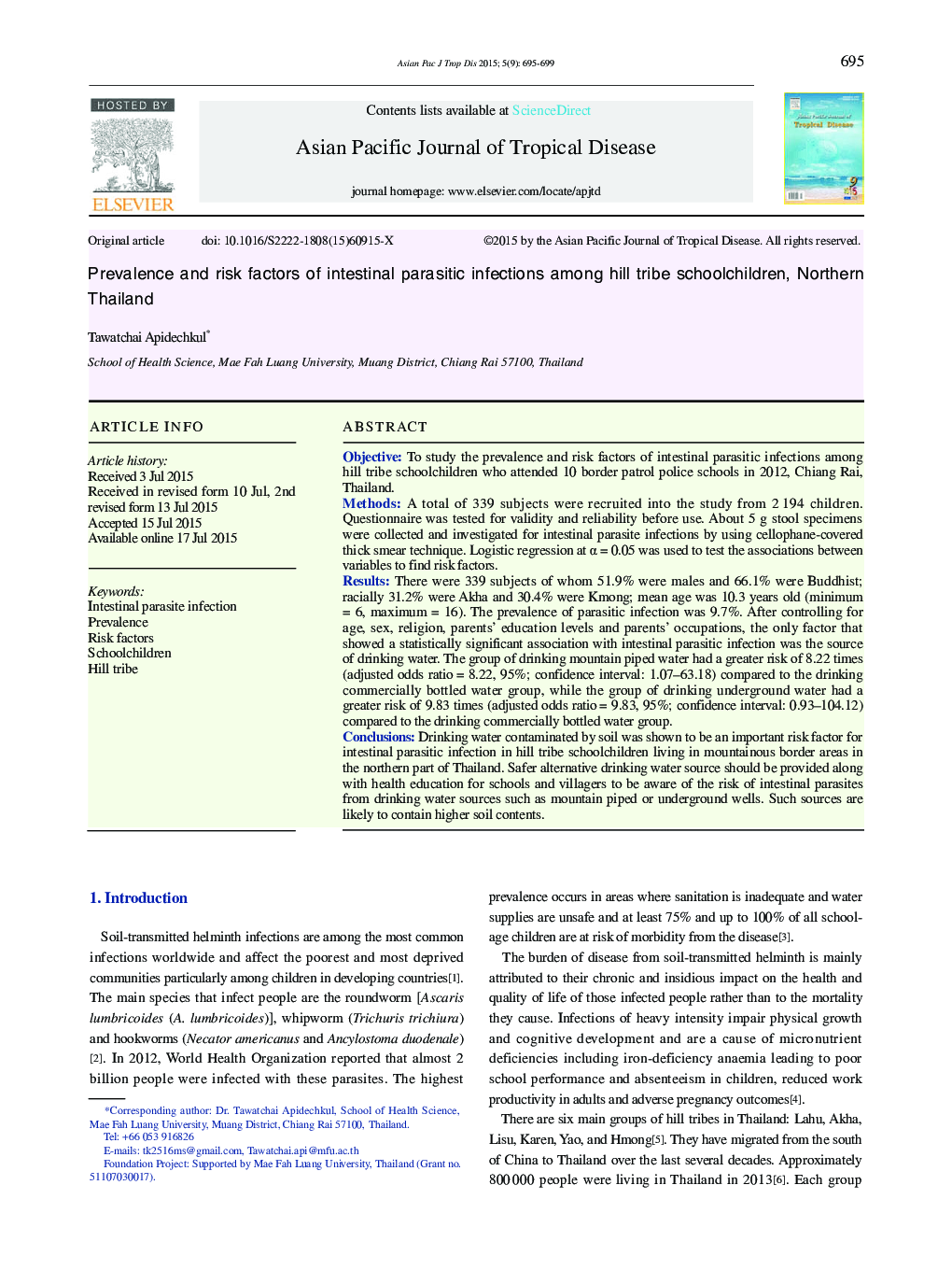| Article ID | Journal | Published Year | Pages | File Type |
|---|---|---|---|---|
| 3454323 | Asian Pacific Journal of Tropical Disease | 2015 | 5 Pages |
ObjectiveTo study the prevalence and risk factors of intestinal parasitic infections among hill tribe schoolchildren who attended 10 border patrol police schools in 2012, Chiang Rai, Thailand.MethodsA total of 339 subjects were recruited into the study from 2 194 children. Questionnaire was tested for validity and reliability before use. About 5 g stool specimens were collected and investigated for intestinal parasite infections by using cellophane-covered thick smear technique. Logistic regression at α = 0.05 was used to test the associations between variables to find risk factors.ResultsThere were 339 subjects of whom 51.9% were males and 66.1% were Buddhist; racially 31.2% were Akha and 30.4% were Kmong; mean age was 10.3 years old (minimum = 6, maximum = 16). The prevalence of parasitic infection was 9.7%. After controlling for age, sex, religion, parents' education levels and parents' occupations, the only factor that showed a statistically significant association with intestinal parasitic infection was the source of drinking water. The group of drinking mountain piped water had a greater risk of 8.22 times (adjusted odds ratio = 8.22, 95%; confidence interval: 1.07–63.18) compared to the drinking commercially bottled water group, while the group of drinking underground water had a greater risk of 9.83 times (adjusted odds ratio = 9.83, 95%; confidence interval: 0.93–104.12) compared to the drinking commercially bottled water group.ConclusionsDrinking water contaminated by soil was shown to be an important risk factor for intestinal parasitic infection in hill tribe schoolchildren living in mountainous border areas in the northern part of Thailand. Safer alternative drinking water source should be provided along with health education for schools and villagers to be aware of the risk of intestinal parasites from drinking water sources such as mountain piped or underground wells. Such sources are likely to contain higher soil contents.
